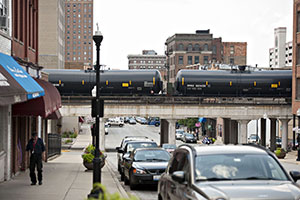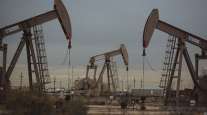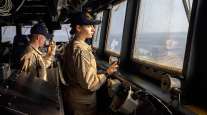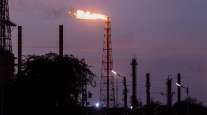US, Canada Release Harmonized Rail Safety Rules

The U.S. Department of Transportation and Transport Canada released a “harmonized” final tank car safety rule that is meant to avert all rail accidents involving crude by rail and other volatile hazardous materials.
Transportation Secretary Anthony Foxx, speaking at a news conference, said “99.9% is not enough”, referring to the current rate of safe crude by rail deliveries. Those shipments have increased 4000% since 2008 as U.S, oil production surged, reaching about 500,000 last year.
Tank car safety became a focus in July 2013 when an accident killed 47 people in Quebec. The issue has been spotlighted since then by multiple wrecks in both countries.
“When it comes to crude, there is no such thing as an American or Canadian shipment,” Foxx said, because of the free flow of rail freight across national borders required collaboration.
“Through strong collaboration we have developed a harmonized solution for North America’s tank car fleet,” said Transport Minister Lisa Raitt. Canada released its final rule today as well.
The U.S. rule sets a schedule of compliance to retrofit existing tank cars with safety features such as thicker shells, thermal jackets and new valve requirements to prevent leaks. It also requires the stiffer safety standards be included in tank cars built after Oct. 1.
The first retrofit compliance target date is in 2017, focused on the cars with the highest crash risk, Foxx said.
Speed limits are set at 50 mph for high hazard flammable unit trains, known as HHFUTs, in all areas, with a key exception. Crude trains can’t run faster than 40 mph in urban areas if the consist includes cars that don’t meet the enhanced standard.
In addition, the rule in 2021 will require electronically controlled pneumatic brakes instead of air brakes for trains with more than 70 cars that run faster than 30 mph. Freight trains currently use air brakes, which Foxx said, requires a longer stopping distance.
The railroads, oil companies and members of Congress offered a range of reactions.
The Association of American Railroads said the industry “welcomed the tank car rule”, with one exception.
“The DOT has no substantial evidence to support a safety justification for mandating ECP brakes, AAR’s CEO Edward Hamberger said, using phrases such as “rush to judgment” to voice displeasure. “This is an imprudent decision made without supporting data or analysis.”
“The key question is whether science and data show each change will make a meaningful improvement to safety,” said CEO Jack Gerard of the American Petroleum Institute, who focused on more derailment prevention by enhancing rail track and equipment maintenance.
“We are pleased the Department of Transportation has finally set a stronger Federal standard for transporting crude oil by rail,” said a joint statement from Sen. John Thune (R-S.D.) and Rep. Bill Shuster (R-Pa.), who head Congressional committees with rail oversight responsibilities. Their statement also raised unspecified concerns about “unintended consequences.”
NTSB Chairman Christopher Hart also said he was “pleased” with the rule, calling it “a significant step” to address one of the agency’s long-standing concerns.
California Republican Rep. Jeff Denham said “these new standards are definitely a step in the right direction and Oregon Democratic Rep. Peter DeFazio said “I want to congratulate Secretary Foxx.”
Rail carriers also are being required to give community, state and other officials a point of contact about train operations, and will be required to provide routing information when requested.
Tank car users are being required to test and sample crude and other unrefined products and certify proper packaging.
The phase in schedule for tank car equipment updates, outlined in a 395-page U.S. rule continues until May, 2025.
Raitt said the rule strikes a balance between the need to further improve safety and the time needed for rail equipment manufactuers to do retrofits.
“It will not be easy, it will not be cheap,” she said, without giving an estimate.
The U.S. rule estimates the costs to meet the rule’s requirements at $2.48 billion.
About 70% of the North American tank car fleet is U.S.-based.




